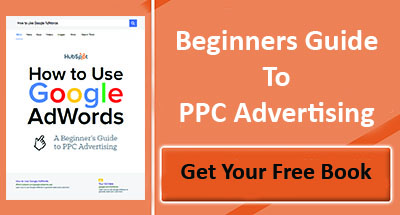The Ultimate Guide to PPC: What PPC Means and How to Utilise it
- Home
- The Ultimate Guide to PPC: What PPC Means and How to Utilise it
PPC means "pay-per-click" and is a form of digital marketing that allows businesses to get their message out in front of the right audience. PPC can be an incredibly effective way for companies to increase brand awareness, drive traffic, generate leads, and ultimately convert those leads into sales. With the growth of Google Ads over recent years, it's become easier than ever for marketers to take advantage of PPC advertising opportunities - but setting up campaigns properly requires knowledge and experience. In this blog post we'll look at what PPC means in digital marketing terms; exploring its benefits as well as the types of ads available through platforms such as Google Ads. We'll also cover how these campaigns work along with tips on getting started and measuring performance so you can optimise your results.
Table of Contents:
- What is Paid Per Click Advertising (What's PPC)?
- Benefits of PPC
- Types of PPC Ads
- How Does PPC Work?
- Setting Up Your PPC Campaign
- Measuring Performance
- Optimising Your Campaigns
- PPC in digital marketing
- CPC And PPC
- PPC Example
- FAQs in Relation to Ppc Means
- Conclusion
What is Paid Per Click Advertising (What's PPC)?

PPC, or Pay-Per-Click advertising, is an online marketing model where businesses pay a fee each time their ad is clicked. It’s one of the most effective ways to drive targeted traffic to your website and generate leads and sales. PPC ads are displayed on search engine results pages (SERPs) when users type in relevant keywords related to your business.
The cost per click (CPC) for PPC campaigns varies depending on the competitiveness of the keyword you choose and other factors such as location, device type, etc. You can also set daily budget limits so that you don’t exceed what you can afford to spend on your campaign. When setting up a PPC campaign, it’s important to consider all these factors before bidding on any keywords or creating any ads.
There are several types of PPC ads available including text ads, display ads, shopping ads and video ads. Text Ads appear at the top and bottom of SERPs while Display Ads appear alongside webpages with similar content as yours; Shopping Ads show product images along with prices; Video Ads appear within YouTube videos related to your products/services. Each type has its own advantages so it's important to understand which ones will work best for your business goals before launching a campaign.
When setting up a PPC campaign, there are certain steps that need to be taken in order for it to be successful. This includes researching relevant keywords, creating compelling ad copy, designing attractive visuals, setting bid amounts for each keyword, monitoring performance regularly and adjusting bids accordingly based on the data collected from analytics tools such as Google Analytics or AdWords Editor. Additionally, optimising landing pages according to digital marketing best practices like A/B testing different versions of page elements like headlines or calls-to-action buttons is also essential.
Once launched successfully, measuring performance should become part of a regular routine by tracking key metrics such as click-through rate (CTR), cost per acquisition (CPA), and conversion rate (CR). This helps to identify areas where improvements can be made in order to maximise the return on investment from the campaigns over time. Optimising budgets and bids accordingly based on actual results achieved versus expectations set initially during the planning phase will help ensure success in the long term.
In conclusion, Paid Per Click Advertising is an effective way for businesses looking to increase visibility and reach their target audience quickly while generating leads and sales. With proper planning, setup, monitoring, and optimisation techniques used in this form of digital marketing, great returns can be achieved if done correctly.
PPC is an effective way to reach potential customers and increase visibility for your business, so it's important to understand how it works. By understanding the benefits of PPC, you can make sure that you are taking advantage of all the opportunities available to grow your business.
Key Takeaway: PPC is an effective way to quickly reach your target audience and generate leads and sales. To maximise the return on investment, businesses should plan, setup, monitor and optimise their campaigns regularly. Key elements include researching keywords, creating ads, setting bids & budgets and optimising landing pages.
Benefits of PPC

PPC campaigns are an effective way to reach your target audience and generate leads. With PPC, you can create ads that appear in search engine results or on social media platforms, allowing you to target specific users with tailored messages. This type of advertising is cost-effective since you only pay when someone clicks on your ad. It also provides measurable results so you can track performance in real time and make adjustments as needed.
One of the biggest benefits of PPC is its ability to reach a wide range of potential customers quickly and easily. You can tailor your ads to target certain demographics such as age, gender, location, interests, etc., ensuring that your message reaches the right people at the right time. Additionally, by using keywords related to what users are searching for online, you can increase visibility for relevant searches and drive more traffic to your website or landing page.
PPC campaigns provide businesses with the flexibility to adjust their budget based on how much they wish to spend per click or impression (CPM). This makes it easy for companies with restricted funds to begin a digital marketing campaign without having hefty upfront costs, as is the case when using traditional advertising methods such as television commercials and print ads. Moreover, since there's no long-term commitment required in running a PPC campaign - unlike SEO which necessitates continuous optimisation - organisations have full control over their spending levels and don't need to worry about being tied down into costly contracts if they decide not to continue after some weeks or months.
PPC is a powerful tool for reaching your target audience quickly and efficiently, and understanding the different types of PPC ads can help you make the most of this marketing strategy.
Key Takeaway: PPC campaigns are an effective and cost-efficient way to reach potential customers, as you only pay when someone clicks on your ad. You can tailor ads to target certain demographics, increase visibility for relevant searches and adjust budget based on desired spending per click or impression.
Types of PPC Ads
Search engine ads (Google Ads):
Search engine ads are the most common type of PPC ad. They appear at the top and bottom of search results pages when a user searches for a keyword or phrase related to your product or service. These ads typically contain text, an image, and a link to your website. For example, if you own an online pet store, you could create an ad that appears when someone searches for “pet supplies” or “dog food”.
Display Ads (Google Display Network):
Display ads are visual advertisements that appear on websites across the internet in various sizes and formats. They can be used to promote products, services, events, offers etc., as well as drive traffic back to your website. For example, if you own a clothing brand you could create display ads featuring images of your latest collection which would then be shown on relevant websites such as fashion blogs or lifestyle magazines.
Social Media Ads (Facebook Ads):
Social media advertising is one of the fastest growing forms of digital marketing today due to its ability to target specific audiences with precision accuracy and low cost-per-click rates compared to other forms of paid advertising like Google Adwords. Facebook Ads allow businesses to reach their target audience by targeting users based on interests, demographics and behaviours – all within just minutes. For example, if you own a restaurant in London you could use Facebook Ads targeted towards people who live in Central London interested in trying new restaurants so they will see your advertisement promoting special deals at your establishment.
Remarketing is a form of PPC advertising that enables businesses to re-engage with potential customers who have already visited their website but have not taken any action, such as making a purchase or signing up for their newsletter list. This type of ad works by placing cookies onto visitors' computers which then allows them to be served tailored messages when they visit other sites related to what they were looking at previously on yours; this helps increase conversions from those prospects who may not have been ready during their initial visit, but now might be more likely after seeing multiple reminders about it elsewhere online.
PPC Ads come in a variety of formats, from search ads to display ads, and can be tailored to fit the needs of any business. Now let's look at how PPC works.
Key Takeaway: PPC (Pay-Per-Click) advertising is a powerful tool for businesses to reach their target audience quickly and cost effectively. Types of PPC ads include search engine ads, display ads, social media ads and remarketing. Each type allows you to tailor your message to the right people at the right time in order to maximise conversions.
How Does PPC Work?
When someone searches for those specific keywords or phrases, your ad will appear alongside the organic search results. If the user clicks on your ad, they will be taken to a website or landing page where they can take action such as signing up for a newsletter or making a purchase.
The cost of PPC campaigns depends on how much you are willing to pay per click (CPC). The higher the CPC rate you set, the more likely it is that your ads will show up at the top of search engine results pages (SERPs). This makes it easier for potential customers to find and click on your ads. It also increases competition among advertisers bidding for placement in SERPs which drives prices up even further.
When setting up a PPC campaign, there are several factors that need to be considered including budgeting, keyword selection and targeting options such as location and demographics. You should also consider creating multiple versions of each ad so you can test different messages and determine which ones perform best with your target audience. Once these steps have been completed, you’ll want to monitor performance by tracking metrics such as impressions (how many times an ad was seen), clicks (how many people clicked on an ad) and conversions (how many people took action after clicking on an ad).
You should regularly optimise your campaigns by testing new keywords and adjusting bids based on performance data from previous campaigns. This helps ensure that you’re getting maximum value out of every dollar spent while reaching more potential customers who may not have seen your ads before due to changes in search trends over time. Additionally, using A/B testing methods can help identify what types of messaging resonates most with users so you can create better-performing ads going forward.
Overall, PPC is one of the most effective ways for businesses looking to increase brand awareness quickly while driving qualified leads directly from SERPs without having to wait months for SEO efforts such as link-building or content creation strategies to start showing results in organic rankings.
PPC is a powerful tool for driving qualified leads to your website, but it requires careful planning and execution. Now that you understand the basics of PPC, let's look at how to set up your own campaign.
Key Takeaway: PPC is an effective online marketing strategy that can help businesses increase brand awareness quickly while driving qualified leads directly from SERPs. Key elements to consider include budgeting, keyword selection, targeting options and AB testing methods. Regular optimisation of campaigns is also necessary for maximum value.
Setting Up Your PPC Campaign

Setting up a successful PPC campaign requires research into relevant keywords. Keywords should be chosen based on their relevance to the product or service being advertised, as well as the search volume and competition for those terms. Tracking tools such as Google Analytics can help you measure performance over time and make adjustments accordingly.
Creating compelling ad copy is essential for success in PPC campaigns. Ads should include an attention-grabbing headline, a concise description of what’s being offered, and a clear call to action that encourages users to click through. It’s also important to use language that resonates with your target audience so they feel compelled to take action.
Selecting the right bidding strategy is key when setting up a PPC campaign. Options include cost per click (CPC), cost per impression (CPM), cost per acquisition (CPA) or pay-per-click (PPC). Each option has its own advantages and disadvantages depending on your goals, budget, and target audience so it’s important to consider each carefully before making a decision.
Monitoring performance regularly is essential for the success of any PPC campaign. Regularly reviewing metrics such as clicks, impressions and conversion rates will provide insight into how effective your ads are at reaching potential customers and achieving desired results like sales or leads generated from them. This data can then be used to optimise campaigns by adjusting keyword selection or ad copy if needed in order to achieve better results over time.
Once you have set up your PPC campaign, it's important to measure the performance of your ads and adjust them accordingly. Next, we will look at how to measure performance and optimise your campaigns for maximum success.
Measuring Performance

Measuring the performance of your PPC campaigns is essential to determine if they are successful and worth continuing. To track the success of a campaign, you should measure metrics such as click-through rate (CTR), cost per click (CPC), conversion rate (CVR) and return on investment (ROI).
Click-Through Rate measures how many people clicked on an ad after seeing it. A high CTR indicates that users find the ad relevant and engaging. Cost Per Click is the amount paid for each click received from an advertisement. This metric helps advertisers understand how much they are paying for each visitor to their website or landing page. Conversion Rate shows what percentage of visitors take action after clicking on an ad, such as making a purchase or signing up for a newsletter. Return On Investment is calculated by subtracting total costs from total revenue generated by the campaign divided by total costs incurred in running the campaign. It’s important to keep this number positive in order to ensure that your campaigns are profitable over time.
Measuring performance is key to understanding the success of your PPC campaigns, and it's important to regularly review and analyse these metrics in order to make sure you're getting the best return on investment. Moving forward, we'll explore how to optimise your campaigns for maximum efficiency.
Key Takeaway: PPC campaigns should be tracked and measured using metrics such as CTR, CPC, CVR and ROI to determine their success.
OptimiSing Your Campaigns
Optimising your PPC campaigns is an important part of digital marketing. It involves making changes based on the data collected from measuring performance in order to improve results over time. This could include adjusting bids, changing ad copy or targeting different keywords or audiences depending on what works best for you and your goals.
CPC (Cost Per Click) and PPC (Pay Per Click) are two terms often used interchangeably when discussing online advertising. CPC is the amount a publisher charges an advertiser for each click on their ad, while PPC refers to the model where advertisers pay only when someone clicks their ads. The cost per click can vary widely depending on factors such as industry, competition level, and keyword popularity.
PPC example:

Let’s say you have a website selling shoes and want to increase sales through paid search ads. You would create an ad campaign targeting relevant keywords related to shoes that potential customers might be searching for - like “running shoes” or “women's sneakers” - with a set budget per day/week/month that will determine how much you spend overall on the campaign. Once people start clicking your ads, they will be taken directly to your website where they can purchase products if interested in doing so; this is why it's important to ensure that landing pages are optimised for conversions too.
Setting up a successful PPC campaign requires careful planning and research into target audience needs as well as understanding which types of ads work best in different scenarios - text-based display ads may perform better than video ones in some cases but not others. Additionally, it is essential to measure performance regularly by tracking key metrics such as impressions, clicks, conversion rate etc., so that adjustments can be made accordingly if needed; this could involve optimising bids or changing ad copy etc. Finally, don't forget about testing new ideas out too - A/B testing different versions of an advertisement can help identity which one performs better before investing more money into it long-term.
By optimising your campaigns, you can make sure that your PPC efforts are efficient and effective. With the right strategies in place, you can maximise your ROI and move on to exploring other digital marketing tactics such as PPC.
Key Takeaway: PPC campaigns require careful planning and optimisation to be successful. Key elements include researching target audience needs, understanding which types of ads work best, tracking performance metrics, and testing new ideas.
PPC in digital marketing
It allows businesses to target their desired audience and generate leads through search engine results pages (SERPs). PPC campaigns are often used in conjunction with other digital marketing strategies such as SEO and social media marketing.
When it comes to PPC, the goal is to get your ads seen by the right people at the right time. This means targeting users who are actively searching for products or services related to what you offer. To do this, you’ll need a well-crafted ad that speaks directly to your target audience and drives them towards taking action on your website.
The two main types of PPC campaigns are Search Ads and Display Ads. Search Ads appear when someone searches for a keyword related to your business on Google or Bing; these ads can be targeted geographically so they only show up in certain areas or countries if needed. Display Ads appear on websites across the web based on user interests; these ads may also be targeted geographically but have more flexibility than search ads since they don’t rely solely on keywords for placement.
Careful planning and research are essential when setting up a successful PPC campaign. You should consider which keywords will bring in qualified leads from potential customers who are likely interested in making a purchase, as well as the budget you want to allocate towards each keyword phrase and any negative keywords that could prevent irrelevant traffic from clicking through your adverts without providing any benefit back to you - such as searches for 'free' solutions where people aren't looking for paid options like yours.
Tracking performance is essential for managing a successful PPC campaign. Measurements such as click-through rate (CTR), cost per click (CPC) and conversion rate (CR) can provide insights into the effectiveness of each advert over time, allowing adjustments to be made if necessary. Testing different headlines and descriptions may help determine which message resonates best with potential customers.
Finally, optimising campaigns regularly helps ensure maximum ROI while staying ahead of competitors bidding against similar terms. Monitoring changes within industry trends and keeping an eye out for new opportunities ensures that no stone goes unturned when it comes to maximising success from all available channels.
PPC is an important tool in digital marketing, allowing businesses to effectively target their desired audiences and maximise ROI. Moving on, let's explore the differences between CPC and PPC.
Key Takeaway: PPC campaigns can be an effective way to reach potential customers online. Key elements include targeting the right people at the right time, using Search Ads and Display Ads, carefully planning and researching your campaign, tracking performance, and optimising regularly.
CPC And PPC

CPC stands for Cost Per Click and is a metric used to evaluate the success of Pay-Per-Click (PPC) campaigns. PPC is an online advertising model in which advertisers pay each time a user clicks on one of their ads. CPC measures how much it costs an advertiser to get someone to click on their ad, giving them the opportunity to reach potential customers who are interested in what they have to offer.
The cost per click can vary greatly depending on the type of campaign being run, as well as the target audience and keywords being used. Generally speaking, more competitive industries or search terms will have higher CPCs than less competitive ones. Advertisers should also consider other factors such as location when determining their CPCs since different locations may require different amounts for successful campaigns.
When setting up a PPC campaign, advertisers should be aware that there are two types of bids: manual and automated bidding strategies. Manual bidding allows you to set your own maximum bid amount while automated bidding uses algorithms that adjust bids based on performance data from previous campaigns so you don’t have to manually adjust your bids every time you want better results from your ads.
CPC and PPC are both effective forms of online advertising, but understanding the differences between them is essential to ensure that you get the most out of your campaigns. To gain a better understanding of how they work, let's take a look at an example of PPC in action.
Key Takeaway: PPC is an online advertising model in which advertisers pay each time a user clicks on their ad. CPC measures the cost of this and varies depending on factors such as industry, keywords and location. Advertisers can use either manual or automated bidding strategies to set bids for PPC campaigns.
PPC Example
PPC Example 1:
Business to Business (B2B)
Business-to-business (B2B) PPC campaigns can be used to target potential customers who are actively searching for products or services that your business offers. For example, a software company could use PPC ads to reach businesses looking for an enterprise resource planning system. The ad would include keywords related to the product and link directly to the company’s website where they can learn more about its offerings.
PPC Example 2:
eCommerce
eCommerce companies often use PPC campaigns as a way of driving traffic and sales from online shoppers. For example, an online retailer might create targeted ads with specific keywords such as “women’s shoes” or “summer dresses” which will appear when someone searches for those terms on Google or other search engines. These ads may also feature discounts or promotions in order to encourage people to click through and make a purchase.
PPC Example 3:
Lead Generation
Lead generation is another popular application of PPC advertising, especially among B2B companies looking for new leads and prospects. For instance, a consulting firm may create targeted ads with keywords related to their industry in order to attract potential clients who are interested in their services. When someone clicks on one of these ads, they will be taken directly to the firm's website where they can fill out a contact form or request additional information about what the company has to offer them.
PPC Example 4:
Local Advertising
Key Takeaway: PPC (Pay-Per-Click) is a form of inbound marketing that can be used to target potential customers and generate leads. It can be tailored for different types of businesses, including B2B, eCommerce, lead generation and local advertising. Key takeaways include: • Targeting specific keywords related to your product or service • Linking directly to your website • Offering discounts or promotions • Attracting potential clients with targeted ads
FAQs in Relation to Ppc Means
What are the types of PPC?
The most common types of PPC (Pay-Per-Click) are search engine marketing, display advertising, social media advertising, and remarketing. Search engine marketing is the practice of bidding on keywords in order to appear at the top of a search engine results page. Display advertising involves placing ads on websites or other digital platforms with the goal of driving traffic to a specific website or landing page. Social media advertising involves creating targeted campaigns that reach potential customers through popular social networks such as Facebook and Twitter. Remarketing allows businesses to target users who have previously visited their site by displaying relevant ads across different channels such as Google Ads and Bing Ads. All these forms of PPC can be used together to create an effective online presence for any business looking to increase brand awareness and drive more sales.
What does PPC mean in social media?
It's commonly used on social media platforms such as Facebook and Instagram to target potential customers with relevant ads. PPC campaigns are cost-effective and allow advertisers to track the success of their campaigns by measuring click-through rates, conversions, and other metrics. With careful optimisation, PPC can be an effective way to reach your target audience while staying within budget.
What is a PPC employee?
A PPC (Pay-Per-Click) employee is a marketing professional who specialises in managing and optimising paid search campaigns. They are responsible for creating, launching, monitoring, and analysing the performance of campaigns across various search engines such as Google Ads or Bing Ads. The main goal of a PPC employee is to maximise return on investment by driving quality traffic to websites through targeted ads while minimising costs. They use data analysis tools to track campaign performance and adjust bids accordingly to ensure maximum efficiency. Additionally, they may create landing pages or other content related to their campaigns in order to increase conversions.
Conclusion: PPC Means?
In conclusion, PPC means Pay Per Click advertising and is a great way to increase brand awareness, generate leads, and drive sales. With the right strategy in place, you can get your message out there quickly and effectively. Google has been instrumental in making PPC more accessible for businesses of all sizes. By setting up campaigns that are tailored to your target audience and optimising them regularly, you can maximise ROI from your ad spend while achieving your marketing goals.



